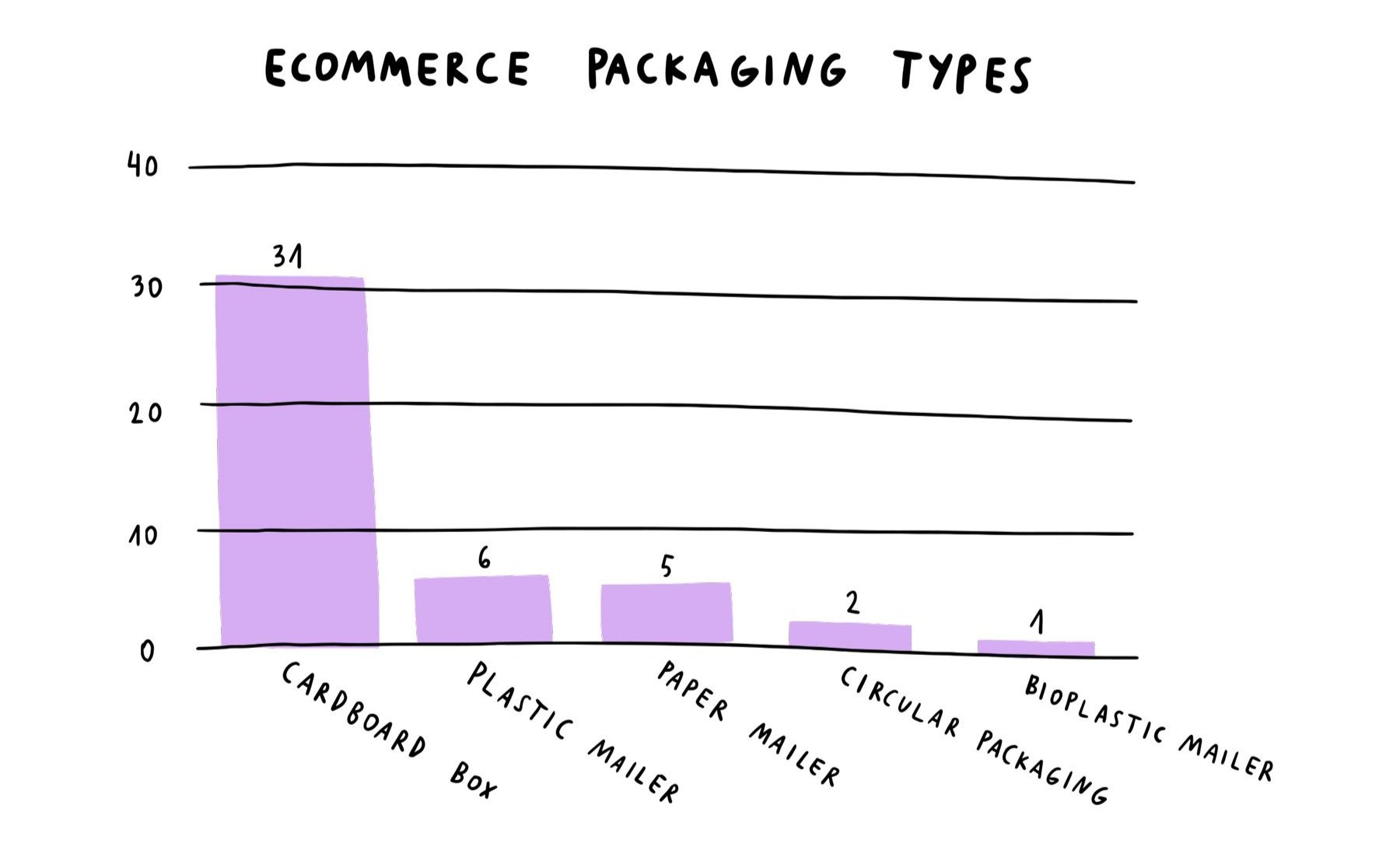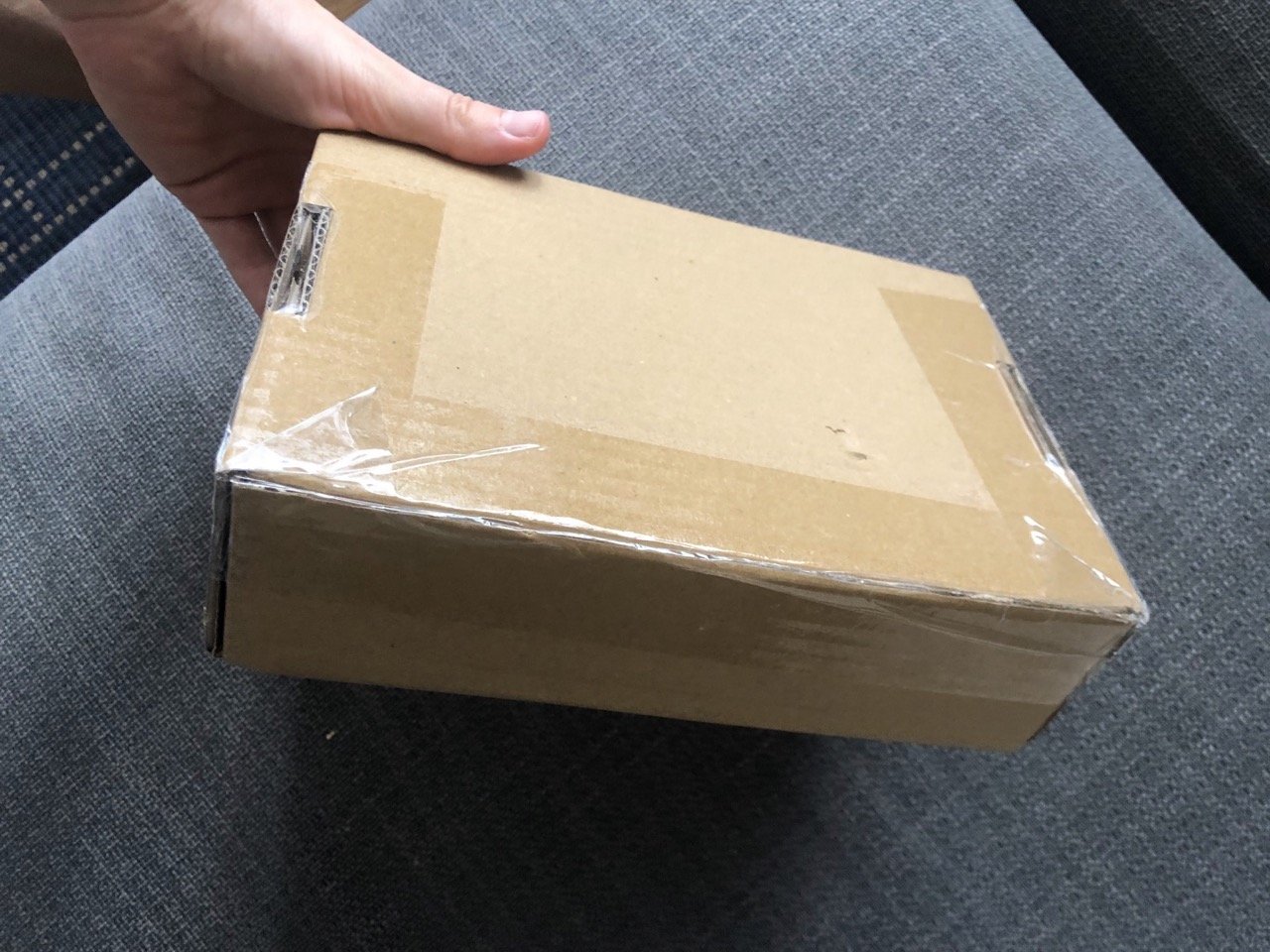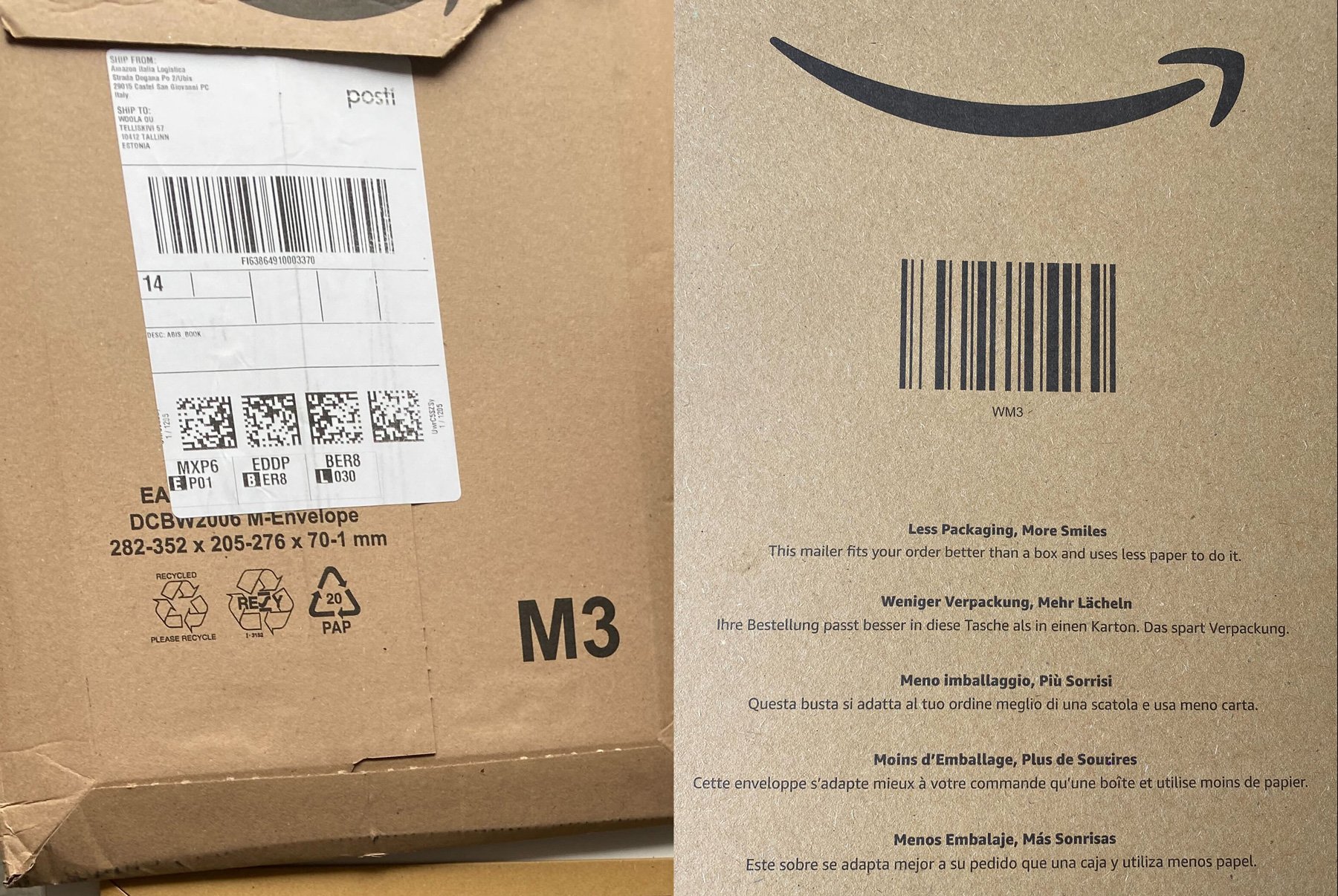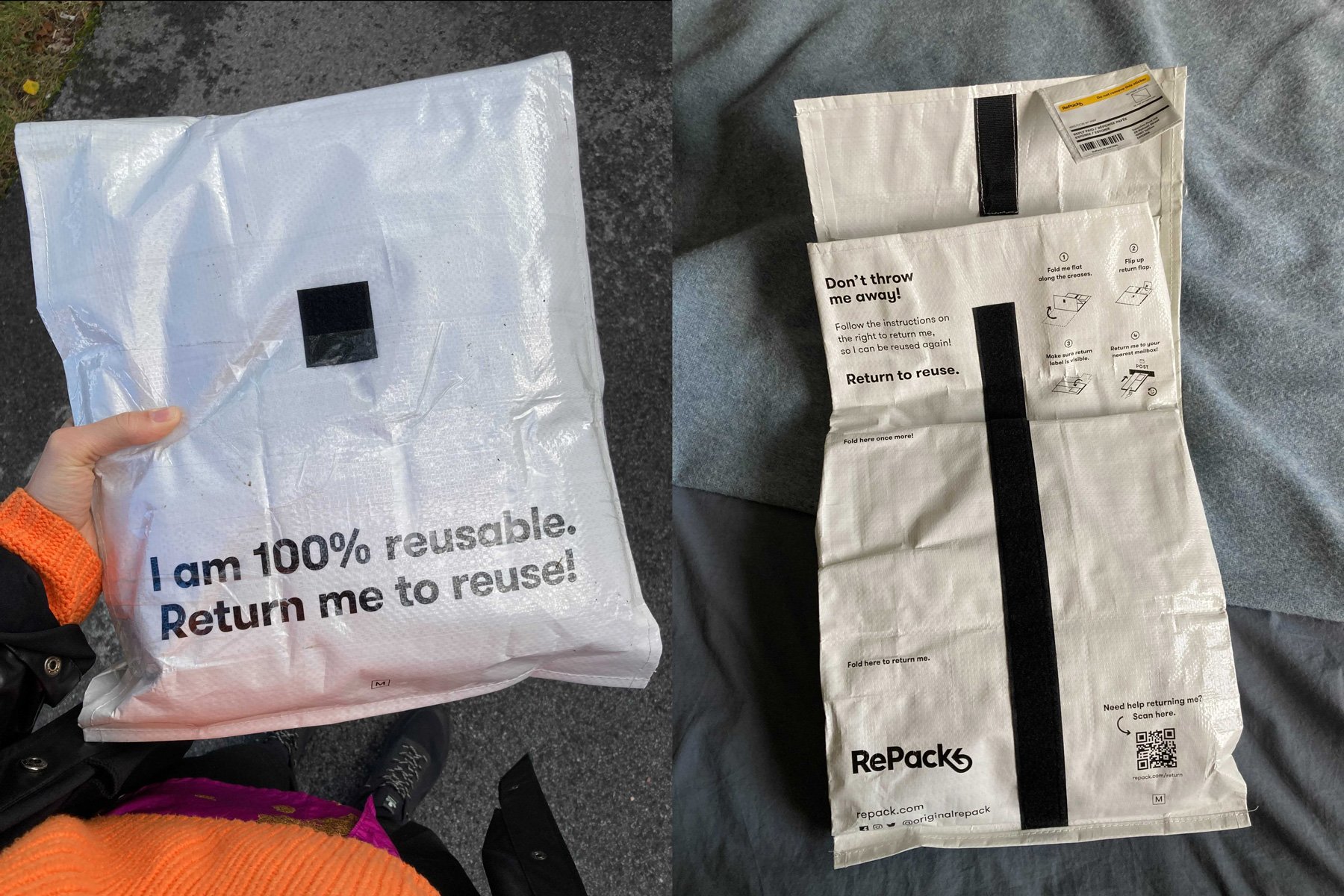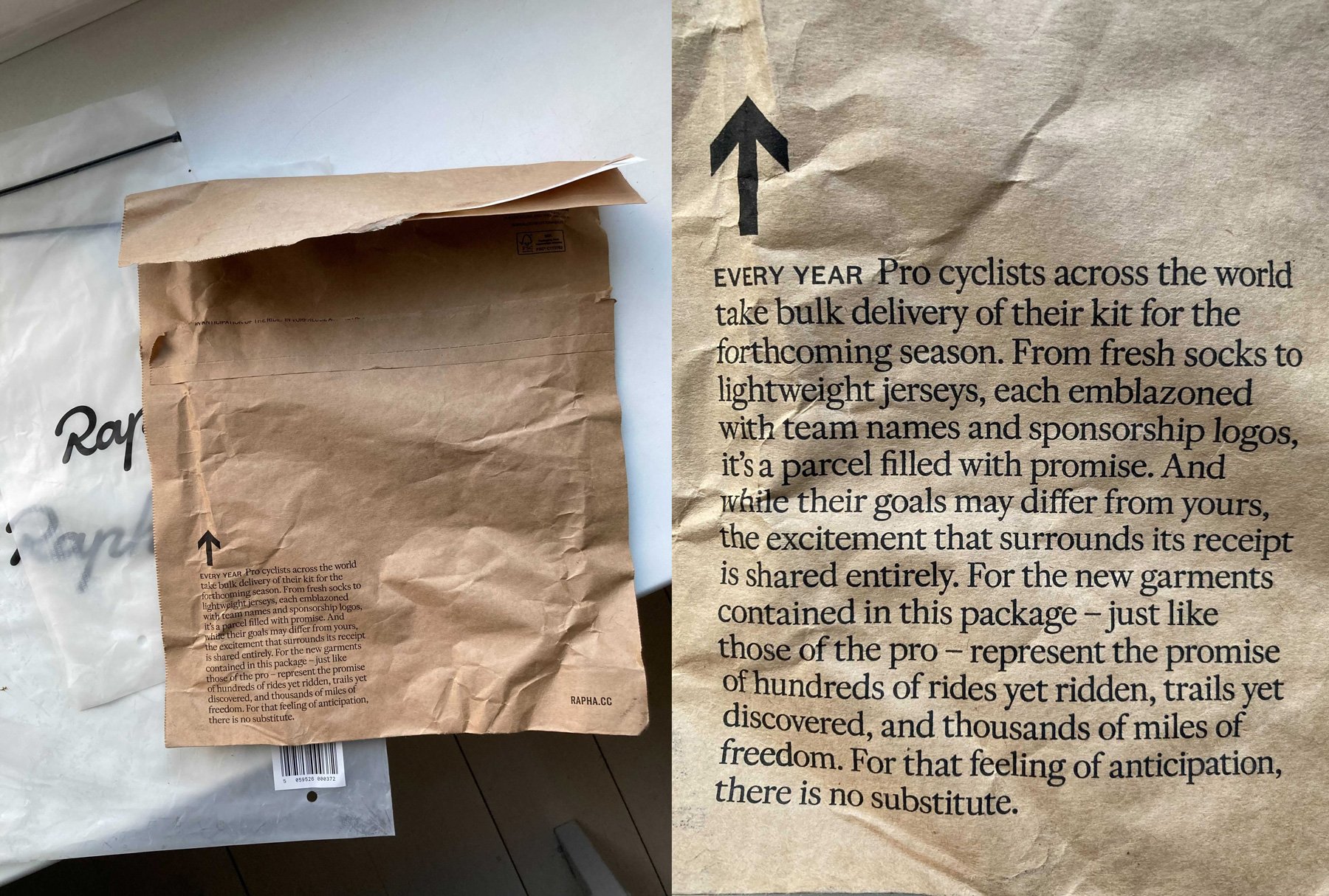We analysed 40+ parcels. Here’s what we learned from ecommerce packaging teardown
Over the last year, we at Woola have been documenting the ecommerce packages we receive. This started out as a #youve-got-mail channel in our Slack to crowdsource a “state of the market”, as our own products are mainly used as ecommerce packaging.
So, we took the time to dig deeper and analysed 42 of these packages, received from 38 different retailers. These included giants like Amazon, Rituals and Sephora, but also a number of smaller companies.
It’s worth noting the Woola team does not represent the average Jane or Joe. We’re definitely more conscious consumers than most, and primarily based in Europe. Also, the dataset is not big enough to make sweeping statements about the overall state of ecommerce packaging. But there are some patterns insights worth sharing nevertheless.
When analysing the parcels, we looked at a few different attributes that matter the most when it comes to making packaging lighter on the planet.
More specifically, we looked at:
Packaging type
Right-sizing
Recyclability
Sustainability
Circularity
Branding
Find our learnings below – read on or click on the topic that you’re interested in the most to jump to the relevant section:
Packaging types: cardboard boxes rule, but plastic is still strongly present, too
Right-sizing: half of ecommerce packages ship more air than product
Recyclability: half of ecommerce packaging is easily recyclable
Sustainability: only about 26% packages are obviously sustainable
Circularity: circular ecommerce packaging is still in its infancy
Branding: ecommerce packaging still untapped as a brand-building vehicle
P.S. The “In summary” section at the very end also includes a link to the raw data, including pictures of all packages analysed in this teardown.
Packaging types: cardboard boxes rule, but plastic is still strongly present, too
31 out of the 42 packages used a cardboard box as the ecommerce packaging. This includes two that were shipped in a cardboard box that was itself packed in a plastic mailer bag.
18 out of 42 packages used plastic in their ecommerce packaging, in some shape or form.
6 out of the 42 packages used a mailer that includes plastic (e.g. regular plastic mailers or bubble mailers that are part-paper, part-plastic), making these the second-most popular ecommerce packaging type. Two out of the six mentioned here used both a plastic mailer and a cardboard box.
5 out of the 42 used a paper mailer envelope.
2 of the 42 packages used circular packaging, and
just 1 package out of the 42 was shipped in a bioplastic mailer.
A couple of things stand out in regards to the packaging types. First off, cardboard boxes seem to be the most popular choice for shipping ecommerce orders. Together with paper mailers, paper-based packaging makes up the overwhelming majority of packaging types used (80% of the packages in our sample).
Secondly, while we’re glad to see plastic is not the primary choice of material for the ecommerce retailers we received packages from, many still rely on plastic tape or plastic bubble wrap. Out of all the 42 packages, 18 (~43%) used plastic in some shape or form as a part of their ecommerce packaging.
Finally, the sad reality is that circular packaging is still a relatively rare exception in ecommerce. More on that in the Circularity section a bit later.
Right-sizing: half of ecommerce packages ship more air than product
21 out of the 42 packages had ecommerce packaging that was not right-sized.
Using right-sized packaging is one of the most impactful practices for making your shipments more sustainable – so you do not ship “air” around the globe, and transportation providers can fit more shipments in any one delivery. Even more, right-sizing can help you save on shipping costs.
Which is why it’s quite surprising to us that in half of the parcels we received, the actual product (and its primary packaging) took up less than half of the space in the package – in other words, they were not right-sized.
A prime example of wrong-sized packaging: the shipping box has at least 10 times more void fill than the actual product.
Nearly all wrong-sized packages used a cardboard box as the main ecommerce packaging (just one was a wrong-sized bubble mailer), and about half of them used more paper-based packaging products to fill the void in the parcels: plain kraft paper void fill, decorative packaging paper and crinkle paper were the most popular choices here.
Six out of the 21 wrong-sized packages did not use any void fill, four used bubble wrap and one used a biodegradable filling material called “Ultrafill”. While this material was not accompanied by any certificate to prove it, we did the background check for this, and confirmed it actually is biodegradable.
Overall, it’s clear that ecommerce retailers have a long way to go in regards to right-sizing their packaging.
Recyclability: half of ecommerce packaging is easily recyclable
21 out of the 42 packages used ecommerce packaging that can be easily recycled.
12 out of the 42 parcels were shipped in packaging that’s definitely not easy to recycle.
For 9 out of the 42 packages, the ease of recyclability was debatable.
Next, we evaluated whether the ecommerce packaging is easily recyclable. According to our standards, packaging is easily recyclable if all of the following apply:
Entire ecommerce packaging is mono-material or the different materials can be easily separated,
It’s obvious how to recycle the material(s) – using common sense or following symbols or guidance on the packaging itself and
Most consumers have easy access to the appropriate recycling bins.
Following this criteria, we found that half the parcels had packaging that is easily recyclable.
Some examples of ecommerce packaging that encourage recycling include the packages we received from Cult Beauty (left), Aesop (middle) and Rituals (right)
For 9 out of the 42 packages, the ease of recyclability was debatable – for example, some of these included bioplastics that claimed to be at-home compostable or biodegradable, without any easily-findable proof to validate such claims.
Others with “debatable” ease of recyclability used plastic tape to fasten the cardboard box – if you’ve ever received a parcel like that, you’ll know it’s not exactly hard to separate the tape, but more often than not it’s not easy either. Even more, the plastic tape itself is not recyclable.
Is a cardboard box covered in plastic tape easy to recycle? We say it’s debatable.
Finally, 12 out of the 42 parcels were shipped in packaging that’s definitely not easy to recycle, such as bubble mailers or using padding made of polyethylene foam. That’s nearly one-third of all packages – so, there's lots of room for improvement when it comes to recyclability of ecommerce packaging.
Sustainability: only about 26% packages are obviously sustainable
11 out of the 42 packages used obviously sustainable ecommerce packaging.
While perfect packaging does not exist, we consider ecommerce packaging sustainable if:
it’s made of 0 fossil fuel based materials,
it’s reusable or easily recyclable and
it degrades much faster than plastic.
But what do we mean by “obviously sustainable” and why is it important? Packaging is obviously sustainable if it comes with communication that highlights its sustainability. We believe such communication is key for inspiring action that leads us to a more sustainable world.
We at Woola aim to drive the industry forward in adopting obviously sustainable packaging that shifts us away from single-use mindset and materials that are made of fossil fuels. And our analysis shows we have our work cut out for us, with just about 26% of parcels packaged in obviously sustainable ecommerce packaging.
The ecommerce packaging of Sephora Canada is obviously sustainable: text printed on the envelope provides transparency into what material the packaging is made of, and its recyclability. Further, a small illustration highlights the brand’s overall commitment to sustainability.
The postal packaging of Amazon Germany also qualified as “obviously sustainable”: the text printed on it highlights the packaging is right-sized and recycling symbols provide clarity on how to recycle the packaging.
Circularity: circular ecommerce packaging is still in its infancy
Just 2 out of the 42 packages were shipped in circular ecommerce packaging.
In our dictionary, circular ecommerce packaging refers to packaging that has been designed with the intention of it being reused several times – and ideally is supported by a returns system. Some would also classify packaging that can be recycled or composted as circular, but in the context of ecommerce such a definition seems too wide to be useful.
Only two of the packages we received used truly circular ecommerce packaging: one was shipped in a Wool Envelope, and the other in a RePack.
RePack is a prime example of truly circular ecommerce packaging, designed to be returned and reused.
While we’re very aware of how challenging it is to create a circular packaging system, it’s disappointing to see how few ecommerce retailers prioritise circularity when it comes to packaging.
At the very least, reuse of packaging should be encouraged to reduce the amount of waste resulting from the prevalent single-use mindset in ecommerce.
We at Woola are in the early stages of offering return options for our products, but we do all we can to encourage reuse: from the messages on our packaging to an entire page on our website dedicated to how you can give Woola packaging a lasting second life.
If more ecommerce retailers and packaging producers adopted a reuse-first mindset, the industry could easily shift for the better.
Branding: ecommerce packaging still untapped as a brand-building vehicle
26 out of the 42 packages had the retailer’s brand visibly represented on the ecommerce packaging.
19 out of these had printed brand elements on the ecommerce packaging.
7 parcels used a branded sticker, plastic tape or had stamped elements on the packaging.
Do first impressions matter? Considering that ecommerce packaging is the first physical touchpoint the customer has with whatever product they’ve ordered, we believe that packages that look good and stand out can elevate the customer experience significantly – in addition to building brand associations.
So, we evaluated the branding on the packages we received and found that more than half of the retailers had gone through the trouble of adding a brand touch to their ecommerce packaging.
However, the devil is in the details here: more often than not the branding was limited to a printed logo, single sticker slapped onto the packaging or branded plastic tape to close the packaging. This shows ecommerce packaging is still untapped as a brand-building vehicle.
Does branded plastic tape add value or create positive brand associations? We think not.
On the other hand, there were also a few ecommerce packages with marvellous branding. For example, the prints on the shipping boxes of the Spanish jewellery brand UNOde50 highlight both the values at the core of their brand, as well as their commitment to sustainability:
Or take the package from cycling lifestyle brand Rapha – they’ve elevated their simple paper mailer with copywriting that would make any cycling enthusiast excited to open the package:
TL;DR
Perhaps the most interesting thing we can learn from the 42 examples is that in 2023, the average ecommerce package is a brown cardboard box with a logo printed on it, full of void fill.
When it comes to sustainability, we still have a long way to go. While cardboard is not as bad as the most popular packaging material, right-sizing seems to be a foreign concept to many retailers, not to mention easy recyclability or circularity.
Further, brands that want their packages to stand out and leave a great first impression need to level up beyond printed logos and branded plastic tape. Great copywriting, unique materials and circular packaging can help level up the unboxing experience and build brand associations.
Every ecommerce brand can learn something valuable from these 42 parcels. Analysing them was certainly an enlightening experience for us – and we look forward to seeing how ecommerce packaging develops in the coming years.
P.S: Find the raw data of this analysis (including links to photos of each package) here.




